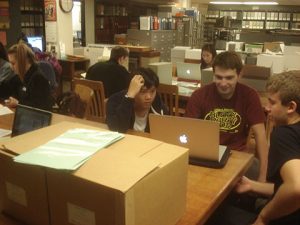Did you know that the rate of graduation of students with disabilities registered in DRES is between 87% and 91%? That is higher than the average graduation rate on campus, which has been around 85% and 88%! Also, are you aware that our campus has been ranked #1 for several years as the most accessible campus for students with disabilities? Did you know that the University of Illinois at Urbana-Champaign was the very first institution to provide full access to all university services, curricula and facilities? One more question. Have you heard of the NWBA (National Wheelchair Basketball Association)?
You are probably guessing what this is all about. Dr. Timothy Nugent, first director of the University of Illinois’ Disability Resources & Educational Services (DRES), and pioneer for disability advocacy and equity, left a legacy that continues to shape the development of accessibility design and equity policies for individuals with disabilities.
Among other important contributions, Nugent pioneered research on architectural barriers, accessibility standards, transportation, and recreation for individuals with disabilities. Nugent was involved in supporting the activities and the administration of DRES and the fraternity Delta Sigma Omicron, a rehabilitation service fraternity whose members originally were students with disabilities on the University of Illinois campus. In addition to this work, he also founded the National Wheelchair Basketball Association (1948), collaborated closely with organizations as American National Standards Institute (1959-92) and was pioneer in developing accessibility-friendly public transportation.
At the University Archives, you will find 21 Record Series related with the history and development of the DRES center, which include: Timothy J. Nugent Papers, 1939-2007 (Series 16/6/20); the DRES Subject file, Photographic File and Scrapbooks; the Fraternity Delta Sigma Omicron records; and several records related to the Wheel Chair Basketball team and Wheelchair Athletics. Materials in these collections consist of correspondence, photographs, booklets, video recordings, audio recordings, and committee minutes. Some materials include contents accessible on-line. See here all disability-related Record Series available at the Archives.
To honor Timothy Nugent, who recently passed away on Wednesday, November 11 2015, the University Archives is sharing an exhibit highlighting some of DRES’ main achievements. Enter the exhibit here.



